The movement to prioritize housing for people over storage for cars has reached a new high point in the Pacific Northwest.
In the first action of this kind by any US state, Oregon’s state land use board voted unanimously last week to sharply downsize dozens of local parking mandates on duplexes, triplexes, fourplexes, townhomes, and cottages.
Many cities have reduced or eliminated parking mandates in recent years, including Oregon’s largest city, Portland.
But Oregon’s rule, which stems from its landmark 2019 legalization of so-called “middle housing” options statewide, is a much more unusual state-level action, affecting 58 jurisdictions simultaneously. And because middle housing will soon be legal throughout those 58 jurisdictions—the vast majority of the state’s urban lots—it’s arguably the biggest state-level parking reform law in US history.
Oregon’s new rules hold mandatory parking ratios at or below one parking space per home
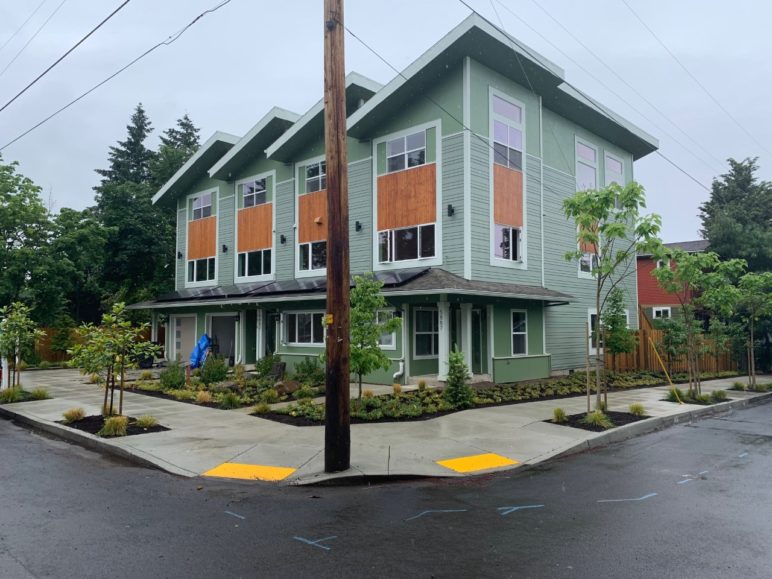
A fourplex with two off-street parking spaces (on the left). Photo: Kol Peterson, used with permission.
Under the new state rules for larger cities and the Portland metro area, middle-housing projects on residential lots of 3,000 square feet or less can’t be required to have more than one off-street parking space, total, for the first four attached homes. For lots of up to 5,000 square feet, no more than two parking spaces can be required, total; for lots of up to 7,000 square feet, no more than three spaces. On lots larger than 7,000 square feet, a limit of one mandatory parking space per home applies.
In all cases, property owners will have the option to include as many off-street parking spaces as they feel the project needs. Their projects simply can’t be required to have more than one space per home, even on the largest urban lots.
This new standard applies to areas that are home to 2.5 million Oregonians, or 60 percent of the state’s population.
Last week’s vote by the governor-appointed Land Conservation and Development Commission will strike down the current parking mandates in Salem (1.5 per home), Eugene (1 per home), Gresham (2 per home), Hillsboro (1 per home), Beaverton (as many as 1.75 per home), Bend (as many as 2 per home), Medford (1.5 per home), Springfield (as many as 2 per home), and many other cities.
In 22 smaller Oregon cities, those between 10,000 and 25,000 population, duplexes will be legalized on all lots. As part of that, duplexes in those cities will no longer be required to have more than one space per home. Another eight percent of Oregonians live in those cities.
“I think it’s great for Oregonians,” said Sara Wright, transportation program director for the Oregon Environmental Council. “We have limited public and private space; we have increasing population. It’s great to give us more flexibility in the way we build our communities.”
“We can now use that space for more housing, more space for others,” said Timothy Morris of the Springfield Eugene Tenant Association, who sat on a state advisory committee that helped vet the rules. “We can even add entire units of housing where parking spaces would have been.”
Wright and Morris were among a coalition of environmental and housing advocates and professionals from around the state, organized by Sightline, who had urged the state commission to pass such a policy.
Mary Kyle McCurdy, deputy director of the anti-sprawl group 1000 Friends of Oregon and one of the architects of Oregon’s middle housing legislation, sat on both advisory committees and watchdogged the commission process over the last year. She credited various factors, including direct input from middle-housing developers and good research by state staff, for building consensus around the change.
“I think it disproved the notion that some of these parking changes were coming from a Portland perspective,” McCurdy said. “That was not at all the case.”
People should not be required to pay for parking spaces they don’t need
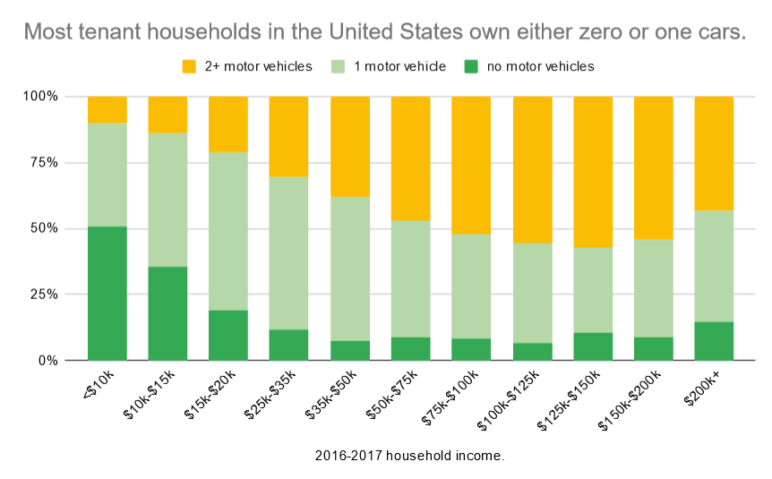
Data: 2017 National Household Transportation Survey.
The new rule was approved as part of the Oregon Land Conservation and Development Commission’s deliberation on how to interpret a crucial two-word phrase in the state’s landmark 2019 law that legalized middle housing statewide.
The phrase: “Unreasonable costs.” Under the law, cities are not allowed to subject middle housing to unreasonable cost.
That phrase in the law required the state to define, alongside a “middle housing model code” that cities now have the option of adopting, a “minimum compliance standard” with which all cities will be required to comply or be declared “unreasonable.”
(Among the many other pro-housing aspects of the minimum compliance standard that’ll be applied to larger cities and the Portland metro area: For townhouse projects, a minimum average lot size of no more than 1,500 square feet. Writing in CityLab in July, Emily Hamilton of Mercatus Center persuasively identified two crucial ingredients of effective middle-housing legalization: low parking requirements and small minimum lot sizes.)
To arrive at the new parking standard, state staffers commissioned a study to examine possible costs and lot layouts for new duplexes, triplexes, and fourplexes. It concluded that for such structures “on small lots, even requiring more than one parking space per development creates feasibility issues.”
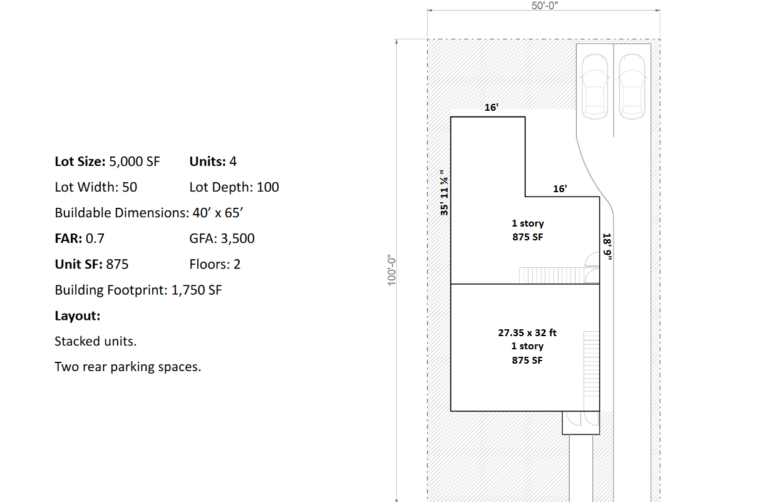
A theoretical site plan for a 3,000 square foot fourplex on a 5,000 square foot lot. Mandating more parking would either pave far more of the lot, vastly increase costs due to excavation, or prevent the homes from existing. Image: Site plans for Oregon Department of Land Conservation and Development from Angelo Planning Group and SERA Architects.
Separately, drawing on prior research by Sightline, state staffers looked at car ownership rates around Oregon. They found that in every affected city, at least 40 percent of tenant households own one or zero cars.
Even in smaller cities and rural areas of the United States, living without a car isn’t all that unusual. It’s simply concentrated among poorer people:
In other words, building lots of off-street parking adds costs that can block projects. And many Oregon households, even in fairly small and rural cities, have little use for it.
Therefore, the staff concluded, it’s unreasonable for a city to require parking spaces whether or not a home’s resident is likely to want them. The reasonable approach is to make it a site-specific decision by the landowner.
The state commission agreed.
A lesson for advocates: Reform parking within the context of things people want, like housing
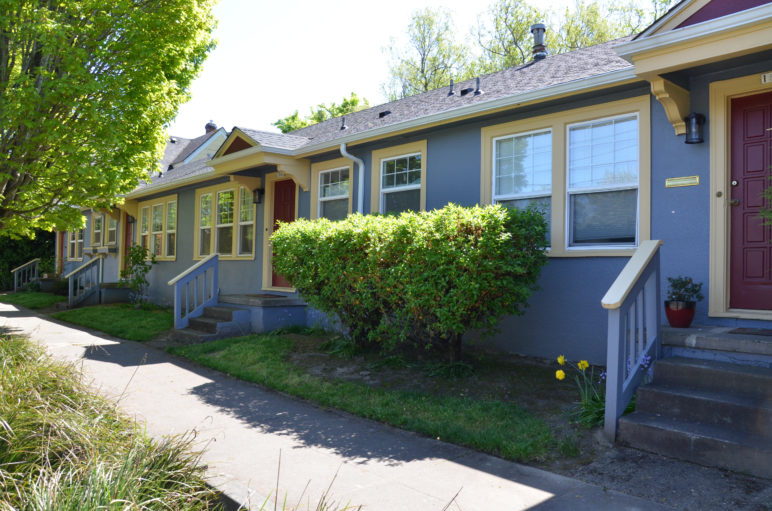
A historic fourplex in Southeast Portland. Photo: Sightline.
Fifteen years after Sightline was among the first outlets to call attention to an odd new book by UCLA Professor Donald Shoup, The High Cost of Free Parking, there is now widespread belief among both housing advocates and environmentalists that citywide parking mandates are a bad idea.
“One-size-fits-all rules—they don’t take into account a lot of context,” said Tony Jordan, the Portland-based founder of the Parking Reform Network, a national advocacy coalition launched last year that has Shoup, among others, on its advisory board. “They don’t take into account the fact that there are a lot of households that don’t have cars. They don’t take into account that there’s a lot of existing supply [of parking space] on the streets.”
If you want to mandate off-street parking, Jordan said, “you’re going to have to cut down trees and you’re going to have to pave more surfaces.”
It’s much better, Jordan and others are arguing, to let property owners make site-specific decisions about their parking needs.
But parking reformers face a political challenge. How to eliminate parking mandates without triggering a “war on cars” freakout?
Oregon’s latest win, along with recent reforms in Washington, California, Minneapolis, and Portland, offer one possible answer: Embed the parking reform inside other reforms.
By embedding their parking reforms in efforts to create more and cheaper homes, these states and cities focused attention not on what their residents stand to lose (abundant parking space) but instead on what residents stand to gain (abundant and cheaper homes).
Morris, the Eugene-Springfield tenant advocate, said that’s the way he thinks about the issue.
“Our health, our planet, our future—the benefits are really grand and the negatives are slightly less parking,” he said. “So I’ll take the pros with the con any day.”

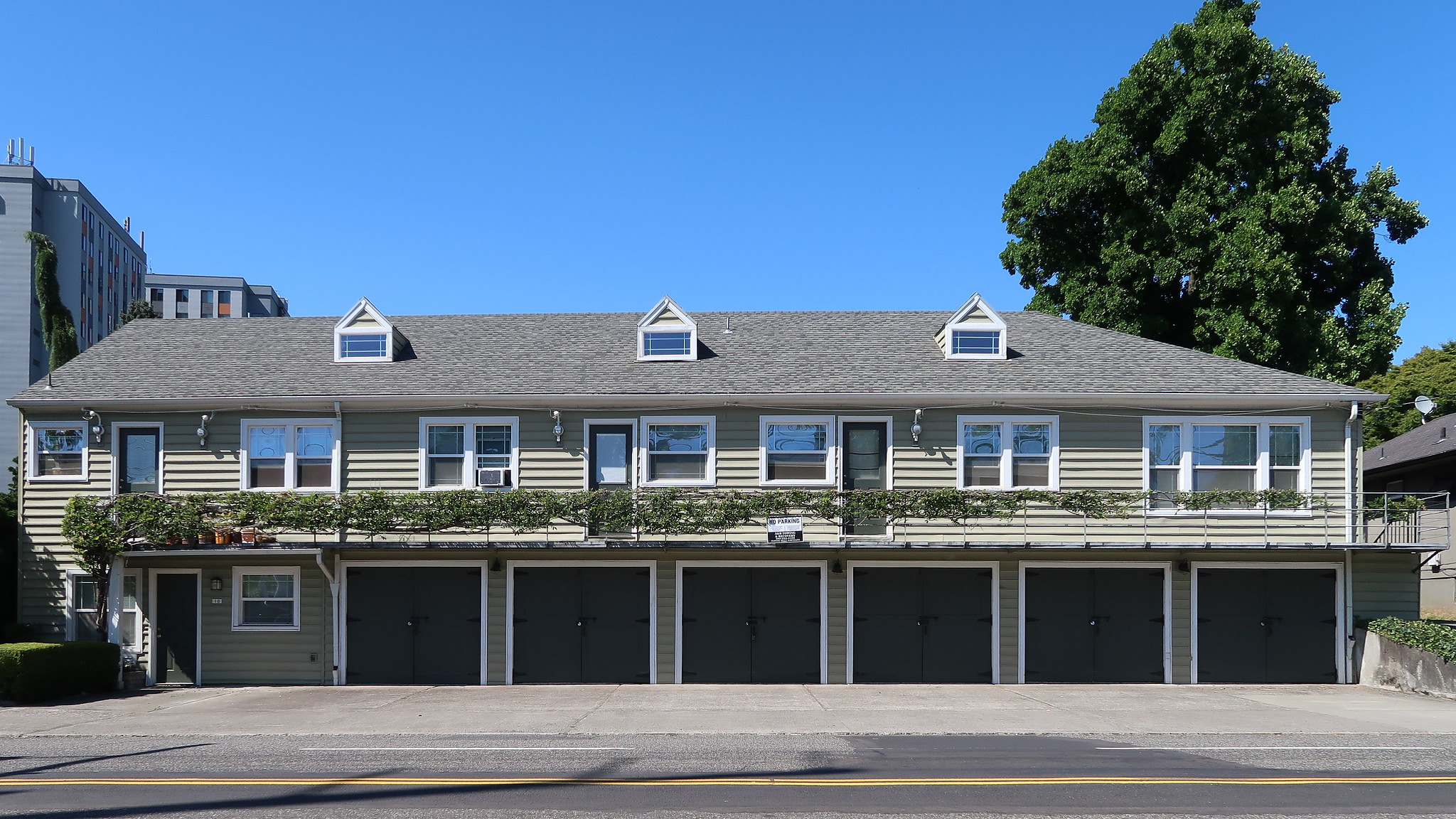
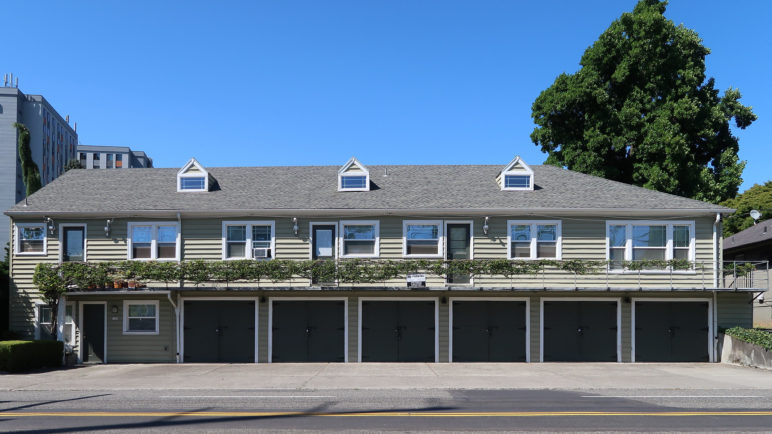

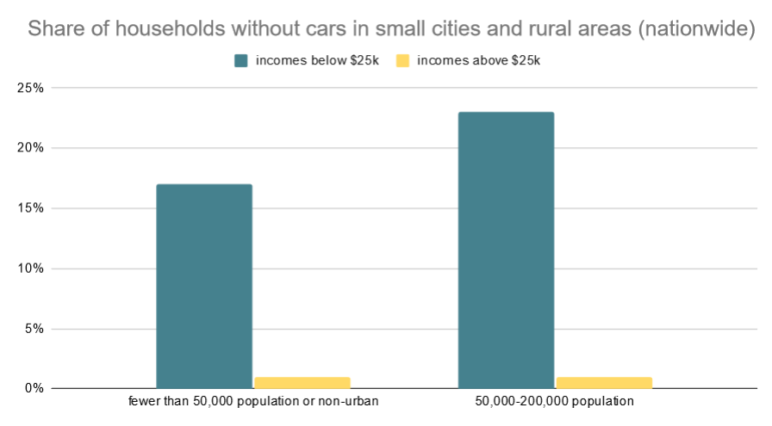






Jody Demeritt
I have to that this idea is bit different than what I expected. Because Oregon and it’s business’s are not crammed to get her like big cities getting around is challenging at times. Increasing the population is your answer to a housing and homeless situations makes no sense. Home owners should also know that this forces vehicles to be stored unprotected unrepairable and abandoned.
Michael Andersen
I totally agree that getting around Oregon is challenging at times. One way to make it easier would be for things to be closer together, as you note. And parking mandates make it illegal for things to get much closer together!
Increasing the number of homes definitely doesn’t make homelessness worse, though.
MarketMissing
I lived in Portland for two decades and seen the effects of allowing places to be built with too few parking spaces. The areas where this has already happened are crowded, cramped and congested. It can be difficult to drive in these areas as parking is so limited that cars will stop in traffic and wait for a space to open since it maght be their only chance to grab a space. It can choke any commercial areas in under parking spaces parts of the city as well. As it is frustrating to go there in the first place.
Michael Andersen
It’s certainly true that increasing the number of homes that are allowed to exist in an area can make the curbsides crowded. But if homes are not allowed to exist in a place where low-car life is relatively doable, then instead they’ll exist in a place where you have to use a car for everything. Pick your poison!
As for street parking, the only real solution to curbside congestion is permits (or meters and time limits in commercial areas), not more garages. You can require people to build garages, but you can’t require people to use them … and without pricing and/or regulating curbside parking, they won’t, until the curbside parking gets annoyingly scarce. In which case you haven’t solved the problem that you were trying to!
Lawrence Cusack
I agree. Might add that drivers letting their cars idle while waiting for a spot – idling is not environmentally friendly. Neither is driving around for 5 to 10 minutes waiting for a spot to open up. Another issue- this hinders drivers just trying to get someplace. This generates more idling traffic.
Developers make more money when they cut back on off street parking.
Perhaps we should take a look at this problem.
Chris
If parking is not available, it is priced too low. That is the basic idea behind Professor Shoup’s work. Encourage your city to raise the cost of parking in public areas where parking is often unavailable.
JimK
Michael Anderson–“One way to make it easier would be for things to be closer together”
That is simply not true. All it does is increase traffic congestion which slows down getting anywhere by any mode.
Increasing density also increases housing cost because the cost of land skyrockets.
See Debunking Portland
BK
“All it does is increase traffic congestion which slows down getting anywhere by any mode.”
Not on foot. Makes it a lot faster. (For example, in our Seattle n’hood we’re 15 minute walk to ~80% of what we likely need any given day, and 95% within 30 minute walk.)
Brian Popiel
It may increase the time it takes to make short trips, but it also decreases the average trip length by allowing more density.
And transportation expenses are a function of housing location. So locating housing in places that decreases transportation costs makes it a wash (in most places).
Ryan Moore
CORRECTION: Timothy MORRIS (not “Scott”) is the advocate from Springfield-Eugene Tenant Association.
Michael Andersen
Thank you! Apologies, not sure how I screwed that up.
Patrick
Good, it’s unnecessary regulation. Free market should decide. Sad thing is how many people who claim to be republican oppose this. Now, it’s time to follow up on this and get rid of all of the other unnecessary regulations in city zoning codes. Start by automatically invalidating any line in the building codes which includes the word “privacy.”
Michael Andersen
I definitely agree that there are lots of unnecessary rules in the world, and prefer to get rid of the bad ones. But which building code rules are you talking about? The soundproofing standards?
Patrick
No. I’m mostly referring to “setbacks” and landscaping requirements.
Soundproofing is a good thing. However, I think even better than requiring soundproofing as a requirement, is instead to make builders certify the level of soundproofing they have and record it with the county on the deed. Then, when selling or renting, the buyer/tenant would receive a simple building report that indicated the compliance level of the building. This would be presented like gas mileage/hp on a car. The tenant know the soundproofing level, seismic performance, energy efficiency level, etc.. before accepting. This would encourage developers to optionally build beyond current code to future proof.
Patrick
ugg, u guys need a an edit button so I can I fix typos. I keep forgetting to proof read before I hit ‘submit’, just hard to read in the small edit box.
Marc Shapiro
There appears to be no cost/benefit analysis in the creation of building codes. Many of the unnecessary code requirements make new housing unaffordable while providing minimal benefit. If these requirements were really necessary, structure 25 to 100+ years old would be falling down with their occupants suffering continual injury or death. The facts do not justify the extreme cost of code compliance!
wesley222
Maybe there should be tax regulations on how my cars you have and can park on the street or limited registered parking permits for neighborhoods so it’s less congested.
Tim McCormick
this article is incorrect regarding parking minimums for cottage clusters on smaller ( “on residential lots of 3,000 square feet or less can’t be required to have more than one off-street parking space, total, for the first four homes. For lots of up to 5,000 square feet, no more than two parking spaces can be required, total; for lots of up to 7,000 square feet, no more than three spaces.”
but the new Oregon rules allow cities to require 1 space per unit on any cottage cluster.
The logic that the article discusses at length, of how requiring a space per unit is very costly and difficult on residential-scale lots, applies especially to cottage clusters. These aren’t usually multi-story for parking to be put underneath, and the economic advantage/feasibility of them likely relies on putting more homes on a lot than would be allowed via plexes. But the new OR rules unfortunately did not apply this reasoning, nor does this article observe the difference.
From my perspective, it’s especially unfortunate for cottage clusters to be yet again disregarded in regulations, advocacy, and reporting, because I believe these often can be the lowest-cost homebuilding form, and one particularly suited to low-capital, non-profit, low-income ownership, limited-equity, co-op, and Community Land Trust development. (for example, SquareOne Village, with which I work, is delivering permanent co-op homes in comparable ‘village’ form, in Eugene area for < $60k unit, affordable to extremely low-income residents).
Even more radically, I'd observe that cottage clusters much more than other building forms could be built incrementally, either one unit at a time or by starting with more basic dwellings. For example, hypothetically, extremely low-income or houseless or refugee/displacee residents might first move into a very low-cost movable sleeping unit or dwelling, perhaps in a context like Eugene's "Rest Stops" or Portland's proposed "Outdoor Shelters" or an interim-use village or emergency housing site. (imagine, say, after a massive San Andreas or Cascadia fault earthquake, or massive California/Oregon wildfires outbreak). Then they might move with this or a next-step mobile tiny house to a cottage cluster site, potentially joining a co-op and/or otherwise having option for long-term stable tenure at site. Then over time, they might shift the mobile dwelling onto a permanent foundation, or upbuild/expand it or build a different unit on the space.
This is thinking from the bottom up, considering the scenarios of the last, first. This also naturally conduces to thinking of adaptation/resilience to climate change and disaster, since these and all disruptions typically hit the people who are last, soonest and hardest. It isn't typically, the guiding view of those legislating, or on rulemaking committees, or reporting on them.
—-
Tim McCormick
PDX Shelter Forum, HousingWiki, Village Collaborative
Portland, OR
Michael Andersen
Thanks for the correction, Tim. I’ve made it “for the first four attached homes on a lot” to help clarify that the lot-size scale doesn’t apply to townhomes (each which are on their own small lot) or to clustered cottages (which are not necessarily attached). And excellent point about the parking barrier to cottage clusters, especially low-cost ones.
Kingeider
Lots of on street parking makes for more non point pollution (oils, metals,tire debris) all of which are bad for the environment. Lack of parking will not keep people from owning cars, as there are inadequate public transit options in most cities. People who say how great transit is are largely not transit users. Large amounts of on street parking also makes streets less safe for bikes and pedestrians
Michael Andersen
I spent five years writing mostly about biking safety and road design, so I know quite a bit about the science there, and I’ve never seen any evidence that having a filled-in parking lane is more dangerous than a half-full parking lane. Have you? My intuition might actually be the opposite, because weaving left around parked cars is so dangerous.
I’m not clear on how on-street parking is worse for the environment than off-street parking. I agree that cars in general are quite bad for the environment, but the only way to escape near-universal dependence on them is to build cities differently, which mostly means creating more homes and businesses specifically in areas where low-car life is possible. But where will we find the physical space for those homes and businesses? Hmm.
asdf2
“Lots of on street parking makes for more non point pollution (oils, metals,tire debris) all of which are bad for the environment.”
So does off-street parking.
“Lack of parking will not keep people from owning cars”
Even if we assume zero public transportation, parking availability still has an impact on people’s decisions to own multiple cars. For instance, when parking is free and unlimited, there’s little reason to ever get rid of the old car when you purchase a new one.
“People who say how great transit is are largely not transit users.”
Irrelevant. Even in areas where public transit simply does not exist, there is still no reason to require parking. That’s not to say businesses in such areas do not need parking to function (they clearly do). But, if the developer will build it anyway, why require it? If a store’s parking lot fills up a few days a year, that’s the store’s problem, not the neighbor’s problem. Especially since most suburban commercial areas don’t even have street parking, so there is no street spaces for the new businesses to “take” from existing ones. If the issue is concern about spillover parking in nearby private lots, it’s the business owner’s responsibility to enforce their own parking lots and ensuring that the violators get towed.